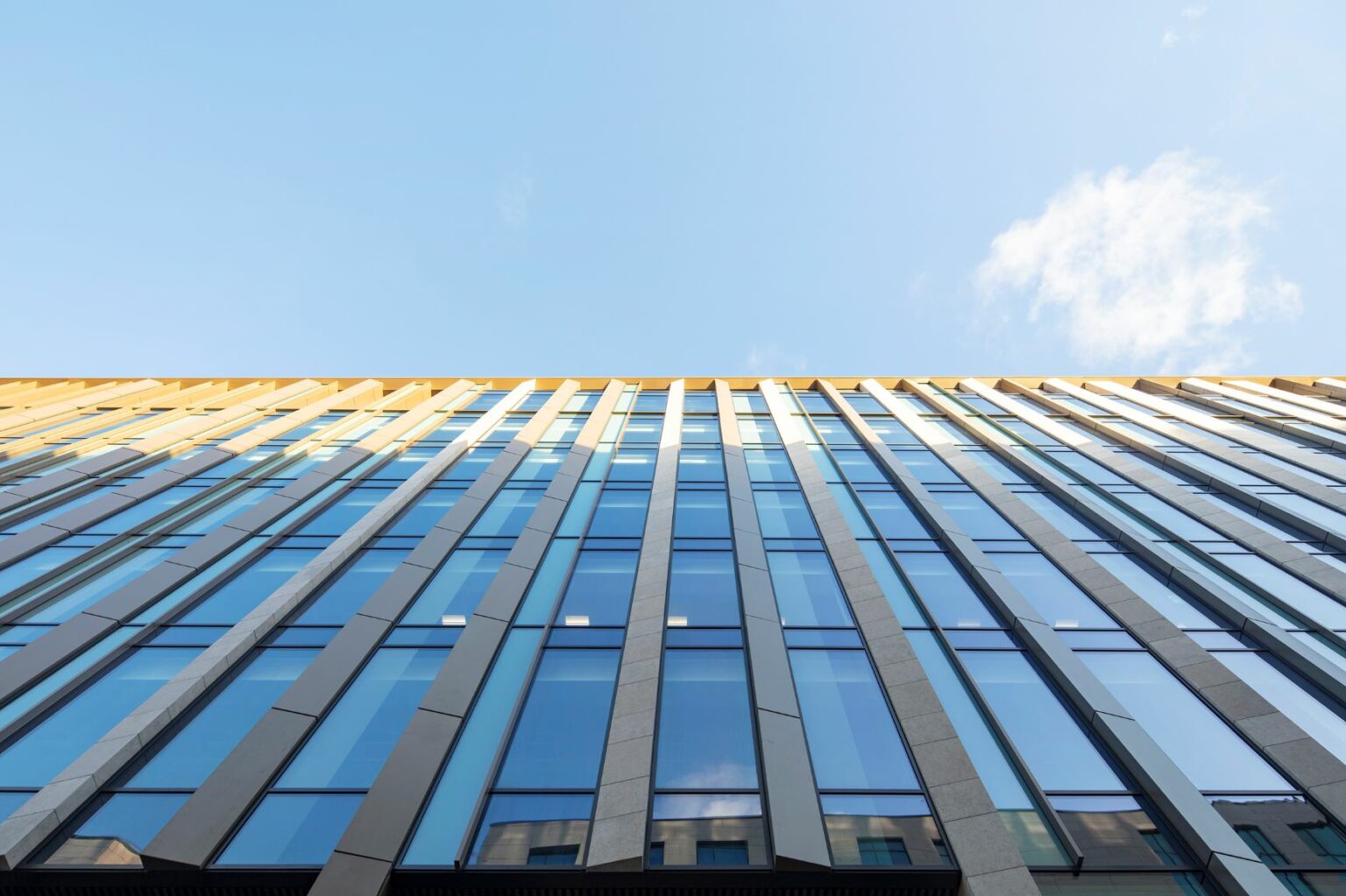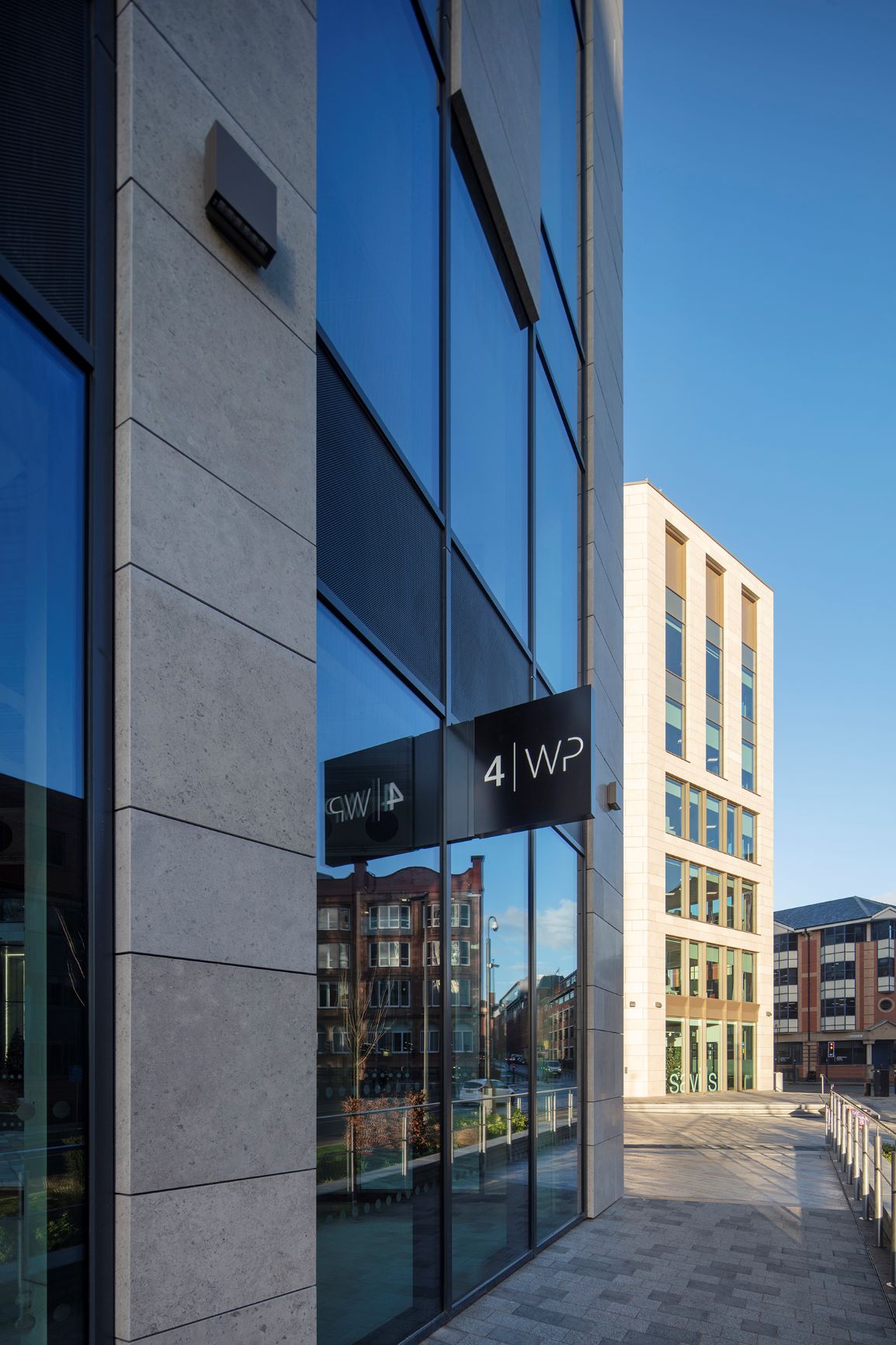Flame-Retardant Henkel adhesives used on A2 spandrel panels
- June 29, 2021
- 2:31 pm


Iain Hoey
Share this content
Speedpanel, part of the Speedclad group of businesses, has developed a range of insulated composite spandrel panels that provide both extremely quick building encapsulation and fire-retardant properties in accordance with the latest regulations. Notably, the company worked in close liaison with adhesive expert Henkel to identify the optimum flame-retardant bonding product for the panels.
In a construction market still reeling from the tragic Grenfell Tower fire in 2017, the resulting Speedpanel A2 Glass and Speedpanel A2 Aluminium carry an independently certified fire rating of A2-s1 d0, creating a huge USP for the company and opening up vast market potential in both new build and replacement façade projects.

Speedpanel insulated composite panels use adhesives to bond various materials together. However, achieving the required A2-s1 d0 fire rating for the panel was to prove challenging as many adhesives feature solvents, isocyanates or PVC, all of which are highly flammable.
“For this reason, we opted to partner with Henkel, to develop a panel construction using a flame-retardant adhesive,” says Fraser Brown, Regional Director at Speedclad. “As a result of our collaboration we now have a suite of industry-first aluminium and glass-faced spandrel panels that have been independently tested by WarringtonFire to achieve A2-s1 d0, in accordance with BS EN 13501-1 2018.”
Looking to ban the use of combustible material in the external walls of certain high-rise buildings in England, the Government added Regulation 7(2) to the Building Regulations In November 2018. It states: “Building work shall be carried out so that materials which become part of an external wall, or specified attachment, of a relevant buildingare of European Classification A2-s1 d0 or Class A1 classified.”
Generally, all materials should comply with a minimum fire classification of A2 s3 d2. However, if a building falls within the ‘relevant building’ class, this fire classification is redundant and all materials need to be A2-s1 d0 rated, effectively a higher level of classification. ‘Relevant buildings’ include residential and institutional buildings more than 18m high.
In terms of composition, Speedpanel products feature a combination of various steel trays, insulated cores, proprietary interlayers and front faces. Any composite panel built of several materials and sold as a single panel – even if the materials are individually A1 fire-certified (as is the case with Speedpanel) – will require re-certification as the complete panel.
Speedpanel approached several leading adhesive manufactures to help it meet requirements. Although a number were prepared to offer solutions that “might” succeed, Henkel differentiated itself by working with Speedpanel to understand the particular application demands.
Following research and trials, Henkel today supplies two types of adhesive for different bonding tasks within the Speedpanel products. Furthermore, Henkel made proposals in terms of suitable application methods that would optimise adhesive quantity and delivery speed: everything from automated spraying to simple pour and spread.
“Without doubt, Henkel’s input and technical support throughout the development process proved fundamental to the success we now have,” concludes Fraser. “The potential for Speedpanel is truly huge. In addition to traditional builds, there is the enormous BSF [Building Safety Fund] framework, where Speedpanel can provide a key part of the solution.”
For more information go to: www.henkel-adhesives.co.uk and www.speedclad.co.uk


